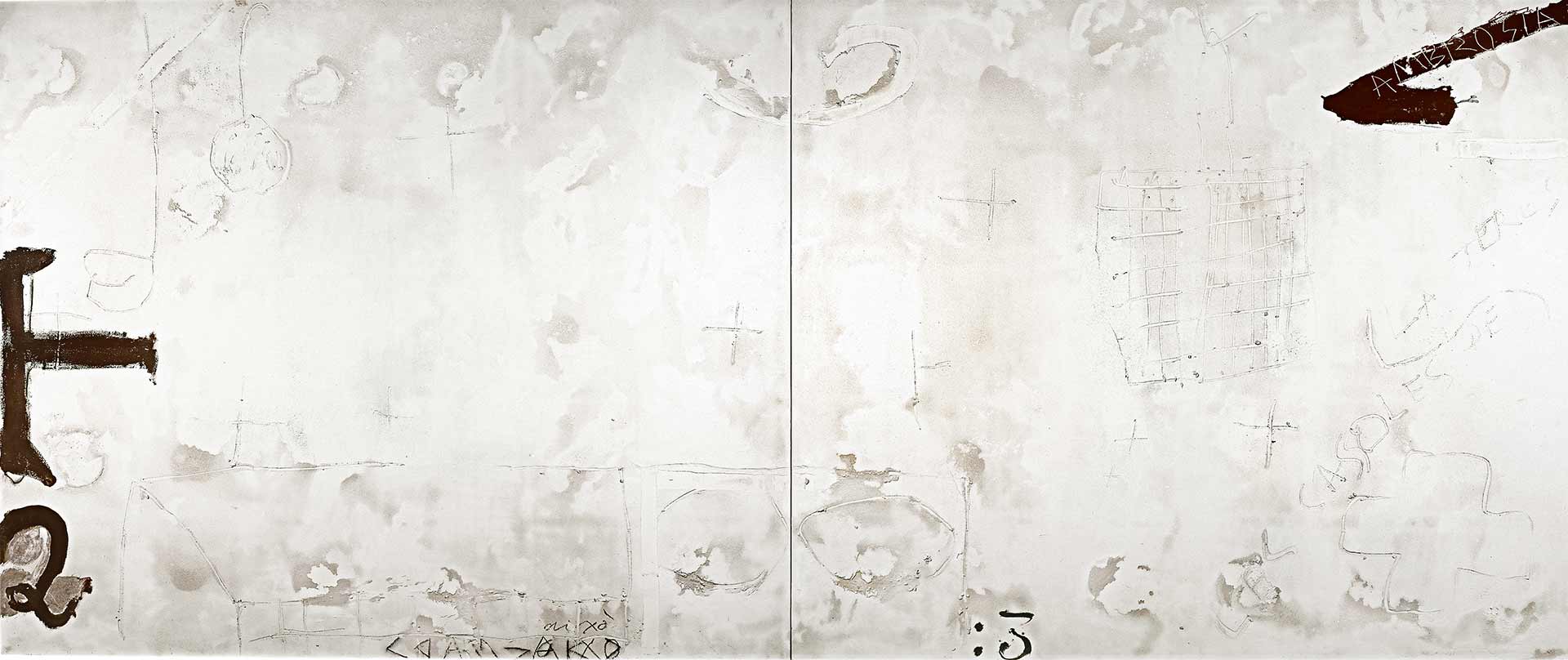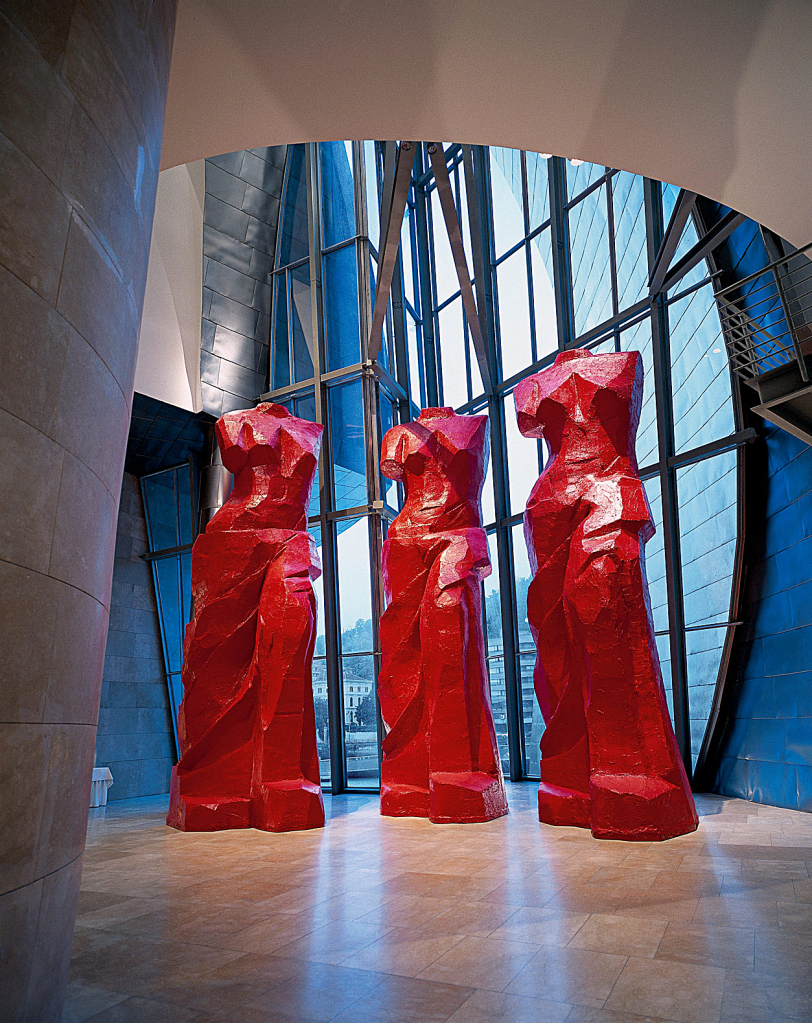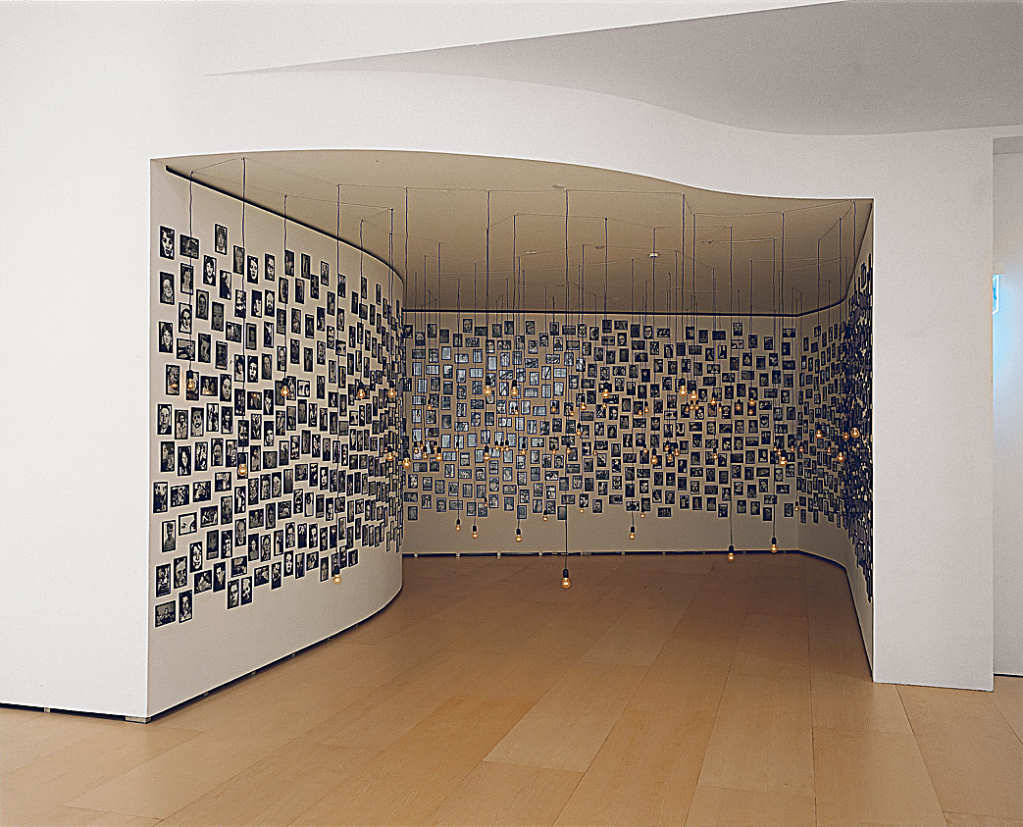Fakires
1993Oil, resin, and cardboard on cotton drop cloth305.6 x 244.5 x 7 cm
The 1960s and 1970s witnessed what has been termed the "dematerialization" of the art object, as the prevailing movements of that period favored works created with an economy of means, often focusing on an idea or concept rather than the object itself. By contrast, the early 1980s were characterized by a return to the traditions of painting and sculpture. It was during this period, after two decades dominated by the aesthetics of Minimal and Conceptual art, that Julian Schnabel played a critical role in the emergence of Neo-Expressionist painting in the United States, the gestural brushstrokes and figurative subject matter of his paintings representing a radical shift in art making.
In 1987 Schnabel began making paintings in which written words and proper names serve as subject matter. The early works in this series marked a change not only from the pictorial narratives that had characterized his previous output, now replaced by ambiguous linguistic notations, but also from an imagery of excess to one of deliberate austerity. Within this series, Fakires signaled a return to a richer palette and a more layered and expressionistic surface than those of the earlier word paintings. Scrawled diagonally across its surface is the word fakires (fakirs), a reference to the Sufi mystics who are frequently associated with asceticism and feats of extreme endurance or corporeal mortification. As Kevin Power has noted, "The word suggests Schnabel's identification with all of those who suffer pain for us—the pain that is inevitably our companion in the world. This work is permeated by a sense of stained humanity and the futility of the fakir's gestures, but the triumph of the bloodstained nevertheless remains; there is a sense of sacrifice as integral to the sacred and, in its wake, the engulfing power of the image as a transmitter of meaning."
Original title
Fakires
Date
1993
Medium/Materials
Oil, resin, and cardboard on cotton drop cloth
More info
Gift of Bruno Bischofberger, Zurich
Dimensions
305.6 x 244.5 x 7 cm
Credit line
Guggenheim Bilbao Museoa



![Large blue Anthropometry [ANT 105] | Yves Klein | Guggenheim Bilbao Museoa](https://cms.guggenheim-bilbao.eus/uploads/2012/05/Klein_Y_La-gran-Antropometria-azul-1024x686.jpg)


